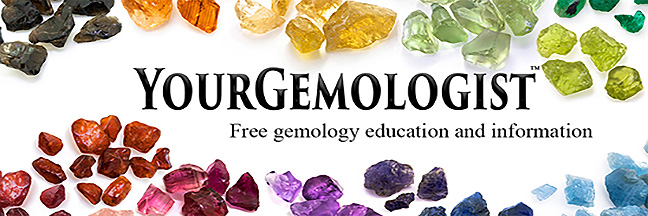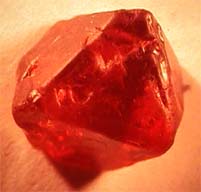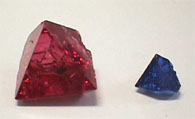 |
|
 Spinel Spinel |
|
|
Consumer Information What color is it?: This gemstones can be a variety of colors from colorless to blue to red...and a lot of colors in between. What is the story behind this gemstone?: Because it has been laboratory grown for a number of years many people think of a spinel as an imitation or synthetic gemstone. But in reality a spinel is an exceptionally fine and rare gemstone with a long standing place in history. In fact, for many, many years the British Crown Jewels boasted what was supposed to be the Black Prince's Ruby, which was assumed to be a very large natural ruby crystal. More recently, however, the stone was found to indeed be a beautiful natural red spinel. Can I wear it everyday?:Absolutely, yes. Wears very well. Is it expensive?: It can be. Large red spinels can be quite expensive. Is it a birthstone?: Not really. But in some cultures the red spinel is interchangeable with a ruby so it can be a birthstone.
---- General Information Source: Sri Lanka, Brazil, Thailand, and United States are most notable sources Chemical: Mg(Al2O4) magnesium aluminum oxide Formation: Mostly in metamorphic rocks but occasionally in igneous formations Crystal System: Cubic as shown above Unusual Properties: None |
|
|
|
|
|
|
|
 What
do I need to know before going shopping?: Above
all be sure and stay with a well trained gemologist. Red spinel
is quite difficult to synthesize. However, it is done as seen
in the photograph at left along with a nice synthetic blue spinel
crystal. You will notice that the red crystal is broken in the
back which often happens with growing synthetic red spinel. But
it can be done and it can be a difficult identification for an
untrained jeweler or inexperienced gemologist. And also note,
the natural spinel crystal at the top of this page is an eight
sided octahedron. And so is the synthetic spinel at left. Showing
that the synthetics will indeed duplicate the natural in every
property. So be sure and stay with a trained gemologist when
shopping for spinels.
What
do I need to know before going shopping?: Above
all be sure and stay with a well trained gemologist. Red spinel
is quite difficult to synthesize. However, it is done as seen
in the photograph at left along with a nice synthetic blue spinel
crystal. You will notice that the red crystal is broken in the
back which often happens with growing synthetic red spinel. But
it can be done and it can be a difficult identification for an
untrained jeweler or inexperienced gemologist. And also note,
the natural spinel crystal at the top of this page is an eight
sided octahedron. And so is the synthetic spinel at left. Showing
that the synthetics will indeed duplicate the natural in every
property. So be sure and stay with a trained gemologist when
shopping for spinels.